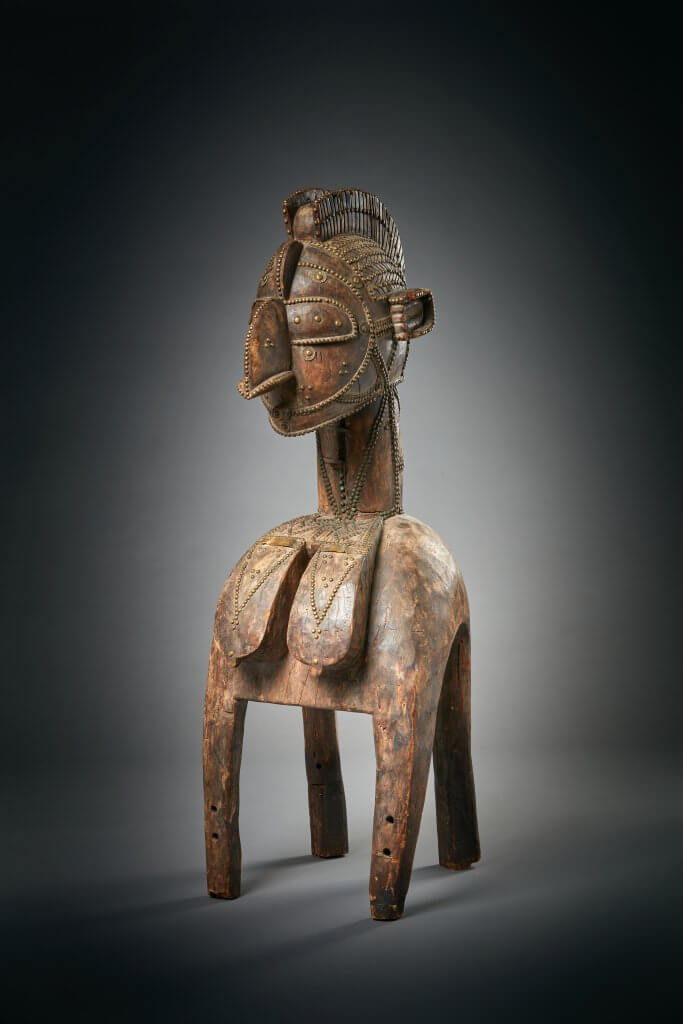Nimba (D’mba) Ceremonial Headdress
The Baga people live along the coastal region of Guinea, Bissau in villages that were divided into two and four different quartiers, which was divided into five or six clans. Traditionally, each village was headed by the eldest member of each clan who would meet secretly to conduct traditional ceremonies and initiations.
The Baga, Nimba mask is associated with female leadership and normally appeared during harvest festivals, and other village ceremonies or celebrations, and also was worn during weddings. The dancer was traditionally showered with libations of harvested rice.
The performance of this mask celebrated and ensured the earth’s fertility and fecundity.
The mask is depicted as a shoulder supported headdress that the performer would have carried over his head. The mask would have been decorated with European upholstery tacks and raffia that would have completely covered and concealed the performer in costume. The holes in the bottom legs of the headdress would have supported a circular bamboo loop that the raffia and costume was attached to.
Provenance: The first known American collector was the renowned collector Lawrence P. Kolton and Rachel Angotti of Michigan City, Indiana, between the years of 1969 and 1979.

Wood, upholstery tacks, and late 19th to early 20th century French coins (products of early European colonialism)
52 x 17 x 21 in
132 x 43 x 53 cm
Baga people;Region of Guinea, Sierra-Leone or Liberia, West Coast of Africa